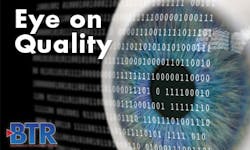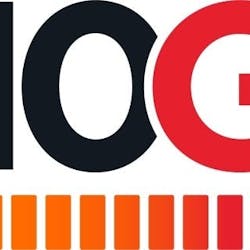By Dan Dodson and Michael Rogombe-Williams, IBB Consulting
Cable video competition has expanded to include over-the-top (OTT) providers like Sling, Hulu and Netflix, and hybrids like Layer 3 as some of these players begin to offer linear services. Cable is responding with new and improved user interfaces, and better content. But in every competitive market, a central question exists: Does cable really have a quality advantage that's worth the price premium?
Features and content are tenuous fronts on which to battle. OTT operators have access to the same content, are acquiring exclusive deals and in many ways are freer to develop new features. Cable is not going to win in a price competition and would rather not have to compete on that front. But one critical area of differentiation where it can maintain a competitive edge is the quality of video it delivers.
Cable operators can control destiny with video quality
Operators not only control content processing end to end, but also the pipes. This provides the opportunity to monitor and correct every part of the delivery process. However, as Internet pipes get faster and faster, they may be big and quick enough to allow any OTT provider to offer superior 4K quality. So what best practices can the cable industry leverage to ensure a competitive edge on video quality?
IBB Consulting surveyed five top North American cable operators about how they are approaching delivery of the best quality video. In these discussions, we took a deep dive into how they are ingesting video, processing it and ensuring that it reaches subscribers intact.
Ingest is moving closer to the source
Cable operators that distribute video to millions of subscribers are successfully centralizing and "gold-plating" ingest operations. Large operators are able to leverage national scale to absorb the associated costs.
Until recently, best practices in video ingest meant establishing national headends where national feeds could be received via satellite or fed via fiber to the operator's encode site using mezzanine streams (20 Mpbs or so). At these centralized facilities, video is re-encoded and multiplexed into set-top box-ready multi-program transport streams (MPTSs) or single-program transport streams (SPTSs). These streams use MPEG-2 transport protocols to send video over quadrature amplitude modulation (QAM) through the hybrid fiber/coax (HFC) plant.
Recently, operators have negotiated with programmers to place encoders at the programmer's point of presence where uncompressed inputs can be fed directly into an encoder. This improves quality by allowing the video to be compressed only once instead of two or three times. It also saves costs by requiring that only the relatively low bit rate final video feed be transmitted from the programmer to the operator's network.
Some operators are moving to simplify video operations from managing two streams per channel (QAM and IP) back to just one. IP video devices require an adaptive bitrate (ABR) feed that provides multiple profiles of video encoded with MPEG-4 at varying bitrates (i.e., profiles) and then broken up into 2- to 3-second video fragments (i.e., files). Video is delivered over QAM in MPEG-2 transport streams. The best practice for ensuring video operations are simplified is to ingest the video once in MPEG-4 and into all of the needed profiles. Where MPEG-2 or MPEG-4 over MPEG-2 transport stream is required, MPEG-4 source is converted at the edge and delivered through the edge QAM.
Ingest quality monitoring is "gold-plated"
As new channels or encoders are added to lineups, outputs are carefully evaluated and engineered using specialized tools and "expert" eyes to yield the best trade-off between quality and available bandwidth.
Reducing the number of encoding points throughout the delivery system also means fewer failure and monitoring points. Some operators use an economy of scale approach to combine all ingest in just a few redundant locations, which makes the ROI for monitoring at each stage of video ingest and processing, even for ad insertion, more compelling.
Gold-plated monitoring is accomplished using deep frame inspection monitors such as those available from Cheetah or Tektronix. These monitors analyze video signals before and after compression. This allows operators to immediately detect loss of video in the feed and abnormalities in both the signal from programmer or with the encode equipment.
Delivery to edge monitoring is widespread
Video MPTSs and SPTSs for both HD and SD content are distributed through an operator's backbone and regional network. Typically, they are carried via IP multicasts that efficiently traverse routers to regional headends where they are either fed directly into edge QAMs or receive additional processing for ad insertion. Alternatively, at least one major operator uses anycast into edge QAMs to protect against issues related to IP address re-provisioning, network configuration changes and convergence-related latency issues potentially interrupting signal flow to the edge.
Additional monitoring is used along this delivery path to verify that the MPEG video signal carried in the MPTS or SPTS is healthy. Light frame inspection equipment, typically using products such as IneoQuest, are used to monitor the video and report missing MPEG frames to the relevant video network operations center (NOC).
Some operators use "crawler"-like tools to perform occasional deeper inspections. This is an added layer of quality monitoring that can cost-effectively provide deep inspection of video frames closer to the edge.
Customer perception monitoring is more challenging
Some operators have placed equipment at the end of the line to monitor video quality in a round robin fashion. Others do periodic "customer panel" comparisons of competitive video providers to assess general quality levels. However, most cable operators rely on set-top box signal measurements and customer-reported troubles to identify and troubleshoot last-mile video quality issues.
Also, there is no widely accepted standard for video quality that an operator might use to compare its own signal to that of a competitor's. It is reasonable to consider that if there were, whether it would have currency in the eyes of customers. Could such a standard provide a basis for competition in the industry?
Encoders and other signal processing devices are calibrated with the help of industry consortiums such as CableLabs. Could they be the key to the development of such standards? A video quality standard that is measurable across cable and OTT video would allow facilities-based operators create a defensible position in the battle to keep premium customers.
A look ahead
As operators seek to maintain an edge in delivery of the best quality video, two trends are driving opportunities in quality monitoring.
Consumers are viewing more time-shifted content (VOD and DVR). Conceptually, time-shifting allows operators to do more to improve ingest quality than they can with existing real-time video encoding. Encode errors could be detected and repaired. Additional compute power and time could be applied to the encode process.
Another trend is the move to IP and specifically ABR. While this is not a new occurrence, the benefit is that once a video stream is converted to a series of video fragment files, it's straightforward for a video player in a set-top box to report whether it missed a fragment or not.
Operators have a strong handle on efficiently delivering the best quality video for a range of content and from a range of sources. Moving forward, it will be important to maintain a focus on the underlying network's reliability in delivering quality to help maintain a competitive edge.
Dan Dodson is a fellow and Michael Rogombe-Williams is a principal with IBB Consulting.





